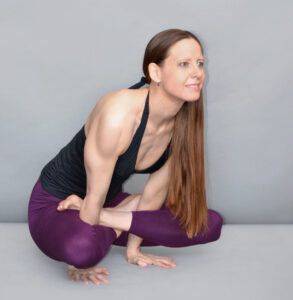Vinyasa Yoga
Vinyasa Yoga – Vinyasa Yoga Teacher Training
Vinyasa in Ashtanga Vinyasa Yoga
Ashtanga Yoga, otherwise known as Ashtanga Vinyasa Yoga is a dynamic style of yoga practice, which emphasizes oujaii pranayama, deep sound-induced breathing through the nose and vinyasa the breath initiated movements between the yoga postures.
In the Yoga Korunta, which details the practice of Ashtanga Vinyasa Yoga it is written:
“O, Yogi, do not practice asana without vinyasa.” – Vamana Rishi
Ashtanga Yoga as well as many styles of Hatha yoga begin with Sun Salutations. Sun Salutations are composed almost entirely of Vinyasa. Each posture in the Sun Salutations, except for downward facing dog posture, which is held for 5 breaths, is entered and exited at the end of either the inhaling or exhaling breath. There is a Vinyasa between each posture of the Sun Salutations.
Vinyasa warm up the body, deepen the breath and maintain alignment in the body between yoga postures.
Every posture of Ashtanga yoga has a designated vinyasa. Yoga postures of other styles of yoga include Vinyasa. The well-known Triangle posture is traditionally entered by hoping or stepping the feet 3 to 4 feet apart, reaching the arms out to the sides and then tiling the torso to the right on the exhaling breath until you reach the big toe. The movement from the standing position into the triangle posture is the vinyasa to enter as well as exit the posture. In this case, the Vinyasa guides the body into the posture correctly.
Vinyasa guide the body into yoga postures correctly.
In Ashtanga vinyasa yoga as well as other styles of yoga, the yoga practitioner steps or hops the feet together in Samastitihi(equal standing posture) between standing postures. This is the vinyasa between standing postures.
Ashtanga vinyasa yoga includes 3 postures and vinyasa between each seated posture. The vinyasa between each Ashtanga yoga posture includes Chaturanga Dandasana(four-limbed staff posture), Urdhva Mukha Shvanasana(upward facing dog posture) and Adho Mukha Shvanasana(downward dog posture). In hatha yoga, the yogi returns to Dandasana, the staff posture between seated asanas. Dandasana is practiced by sitting with a straight spine with the legs extended. Straightening the spine and legs between postures, relaxes the muscles from the previous posture.
Vinyasa relax the body between yoga postures.
Some postures are composed exclusively of Vinyasa. In Ashtanga vinyasa yoga, garbha pindasana, the embryo in the womb posture, is practiced by rolling back and forth in a clockwise circular motion on the back in a lotus position, with the arms through the legs, the head tucked in and the hands holding the head. Kukkutasana, the rooster posture(pictured above) is entered by rolling up and balancing on the hands.
Yoga postures require vinyasa to enter, exit and practice them correctly.
Ashtanga vinyasa yoga instructor, Caroline Klebl teaches vinyasa yoga teacher training courses in Los Angeles and in beautiful retreat destinations around the world. An important aspect of her yoga teacher training is to improve your yoga practice and to learn the postures and vinyasa of Ashtanga vinyasa yoga correctly. If you’d like to improve your yoga practice and attend one of her upcoming yoga courses or retreats please visit SCHEDULE

